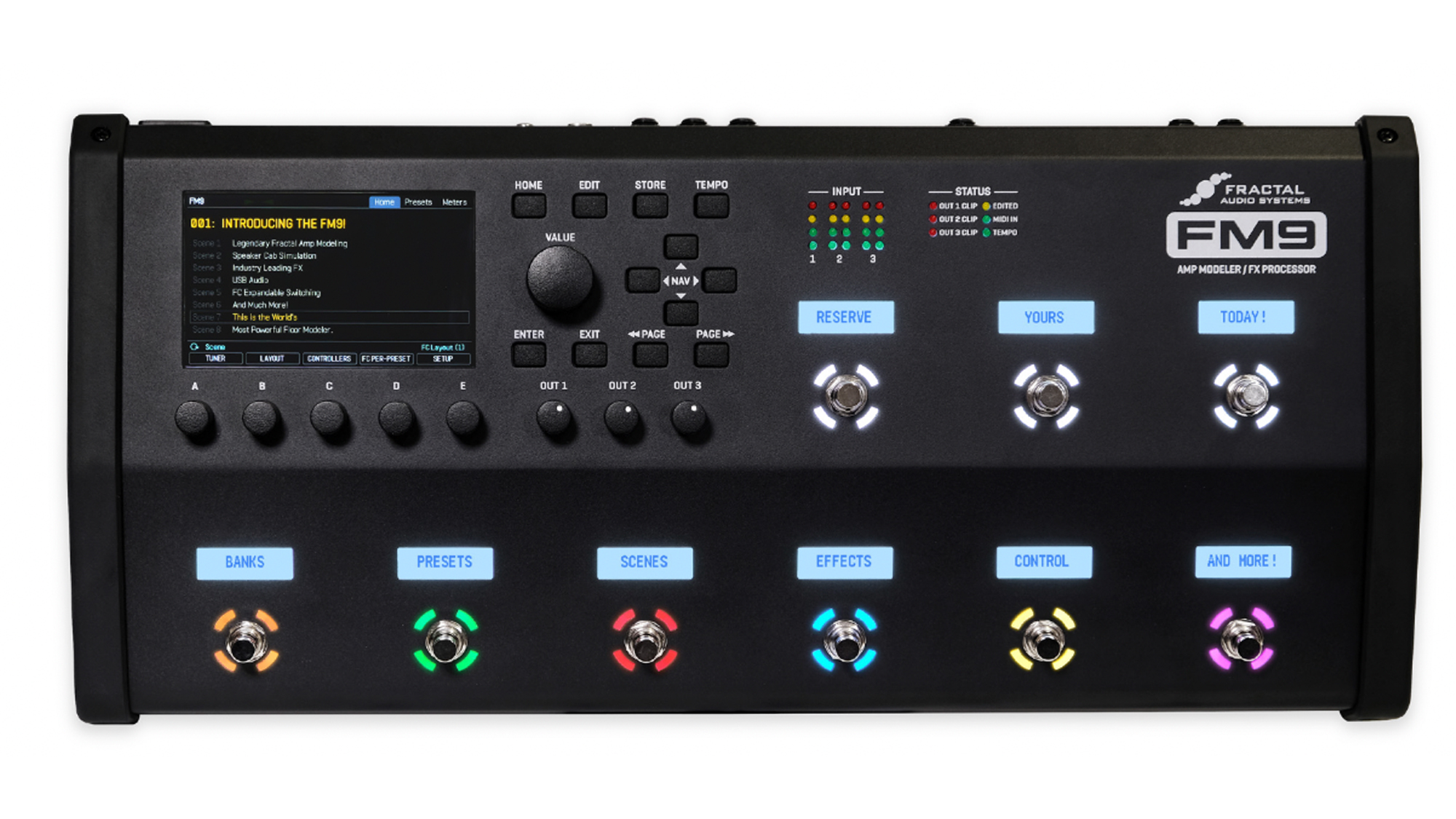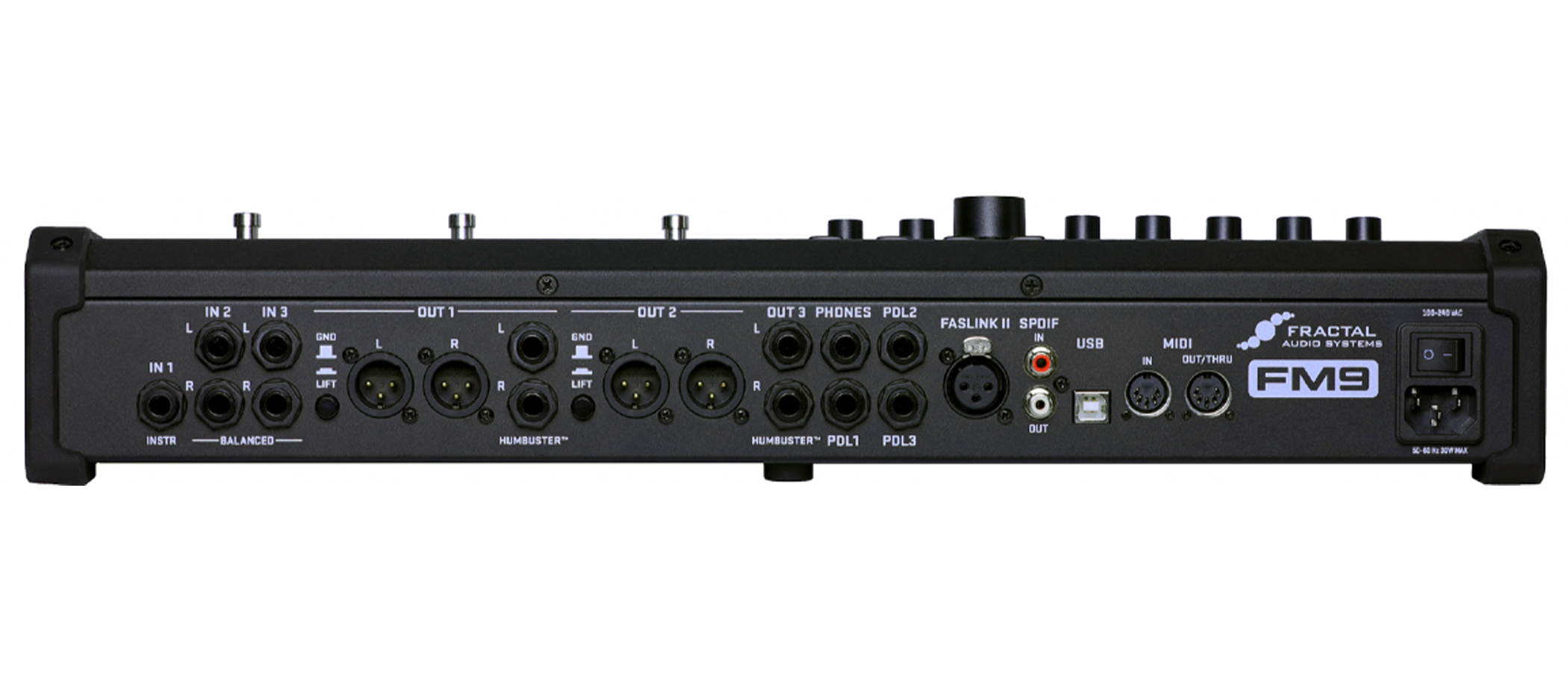Fractal Audio launches its most powerful floor unit yet, the FM9
The FM9 features four DSP cores, 100+ effects and the entire, thousands-strong Ultra-Res cab collection from the Axe-Fx III

Fractal Audio has pulled back the curtains on its latest amp modeler and multi-effects unit, the FM9.
The company's most powerful do-it-all floor unit ever, the FM9 is headlined by four DSP cores, thousands of amp models and cab sims, over 100 stompbox and studio effects, footswitching capabilities, and a whole lot more.
There's a lot to unwrap here, so let's dig in.

The FM9 is anchored by Fractal's Cygnus amp modeling technology, which is said to improve the response of amp models across all input levels (especially, according to Fractal, for amps with cascading gain stages), for more accurate voicing and better touch sensitivity.
The unit's pair of amp blocks each contain four channels which can run any of its nearly 300 amp models – which run the tonal gamut from the cleanest of cleans to the most aggressive of barking gains. Notably, it also includes the entire, thousands-strong cabinet collection from the pricier and larger Axe-Fx III, plus 1,024 locations where users can upload their own impulse responses.
Moving on to effects, the FM9 boasts 57 overdrive pedal models, more than 50 reverbs, dozens of delays, and – in addition to a two-minute looper – a number of choruses, flangers, phasers, tremolos, wahs, EQs, filters, and pitch effects.
Aside from sharing a cab collection with the Axe-Fx III, the FM9 also has the former unit's same signal path design and full-color main display. Physically, it features a 16-gauge steel chassis and protective endcaps that double as feet, plus a set of nine footswitches – each with its own vari-color LED ring and mini LCD display.
Get The Pick Newsletter
All the latest guitar news, interviews, lessons, reviews, deals and more, direct to your inbox!
The purpose of each of the tap/hold footswitches can be customized via a Layouts feature that provides nine different sets of tap and hold functions, while a FASLINK II port – for connecting up to two Fractal Audio FC-12 or FC-6 foot controllers – also comes standard.
There are plenty of inputs and outputs on hand as well, with a 1/4” instrument input, two separate stereo pairs of balanced 1/4” jacks, a main stereo output equipped with both XLR and 1/4” outs, and a headphone jack.
On top of those, there are two additional independent stereo outputs – one XLR and one 1/4” – three on-board jacks that allow users to connect an external switch or expression pedal, and digital I/Os including 48k SPDIF in and outs, and 5-pin MIDI ins and outs.
The unit can also serve as a USB audio interface – with 8-channel recording and 8-channel playback capabilities.
Last but certainly not least, the FM9 comes with Fractal's FM9-EDIT software editor free, and is compatible with the Fractal-Bot app for preset sharing, backups and restoration, and firmware updates.
So! How will this impressive-sounding floor modeling unit compare with the likes of the Neural DSP Quad Cortex, the Line 6 Helix and Kemper Profiler Stage? We can't wait to get our hands on it and find out...
The Fractal FM9 is available now for $1,599.
For more info, stop by Fractal Audio.
Jackson is an Associate Editor at GuitarWorld.com. He’s been writing and editing stories about new gear, technique and guitar-driven music both old and new since 2014, and has also written extensively on the same topics for Guitar Player. Elsewhere, his album reviews and essays have appeared in Louder and Unrecorded. Though open to music of all kinds, his greatest love has always been indie, and everything that falls under its massive umbrella. To that end, you can find him on Twitter crowing about whatever great new guitar band you need to drop everything to hear right now.
“If you’re a young guitar player, that’s money well spent”: John Mayer names the pedal he thinks every young guitar player should consider buying
“An effortless way to customize your TONEX pedals for the stage”: IK Multimedia answers players’ prayers and gives its best-selling TONEX units their biggest upgrade to date – a dedicated editor











